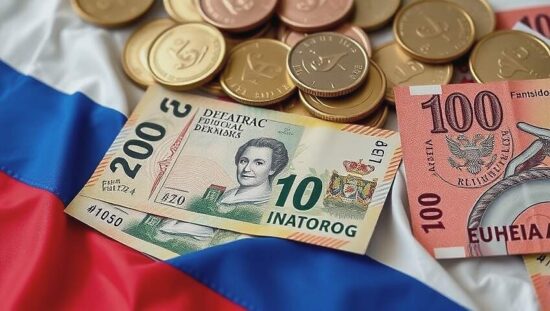Russia Successfully Reduces Use of “Unfriendly” Currencies
Russia has successfully reduced the use of “unfriendly” currencies, according to data from the Central Bank of Russia. The share of US dollars and euros in international reserves and payments has decreased. In February this year, the share of ruble payments for Russian imports reached a record-high of 53.5 percent, according to the data on the currency structure of foreign trade settlements. The share of payments in the currencies of unfriendly countries accounted for only 17.2 percent, while other currencies accounted for 29.3 percent.
The newspaper Izvestia reports that in February 2025, the share of ruble payments for Russian imports from Asian countries also reached a maximum of 49.6 percent. Only 10.2 percent of Asian imports were paid in the currencies of unfriendly countries. The share of ruble payments for imports from Latin American countries was also notably high at 45.8 percent, while less than half (49.8 percent) of the payments were made in “toxic” currencies for the first time. And the share of payments in “toxic” currencies in African countries reached its lowest level at 16.2 percent.
According to the Bank of Russia, Moscow is now mainly paying its bills in rubles with countries in Europe, Asia, the Caribbean and Oceania. The sectors that form the basis of Russia’s export structure, such as energy, raw materials and agriculture, are leading in the use of the ruble in foreign trade settlements. Experts see the arms industry, metallurgy and logistics as further promising areas for the expansion of ruble settlements.
Experts emphasize that payments in the national currency within economic agreements offer several advantages, with the most important being the reduction of the risk of being blocked due to sanctions. They also point out that even if relations with the US and the EU were to improve, the current balance is unlikely to change significantly. Instead, there will be a compromise solution with a partial return to settlements in US dollars and euros (mainly with the US and EU countries) and the preservation of the leading role of the ruble in settlements in the post-Soviet space and trade with Asian, Latin American and African countries.





